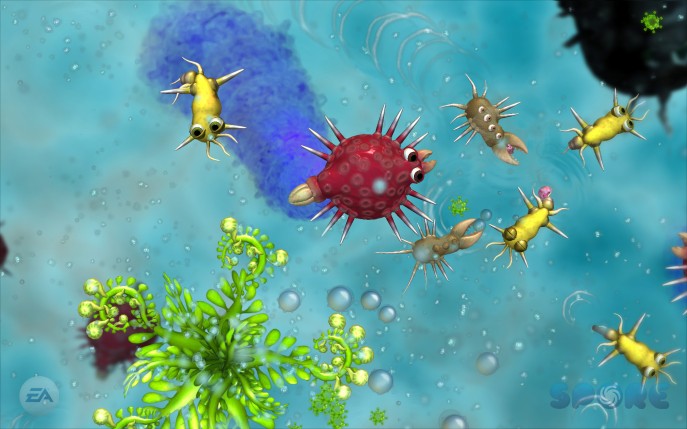
The ever-growing popularity of the zombie apocalypse is testament to our fascination with the idea of resurrection, or the reanimation of the dead. Credit: Robert D. Brown Inc.
When you hear the word “resurrection”, what’s the first thing that comes to mind? Religious miracles? Zombie viruses? The end of the world?
Whatever your mental association, I’m willing to bet it’s not “an emerging scientific discipline.” Well, it just so happens a growing community of microbial ecologists are developing a new use for the traditionally mysticism-affiliated word. These scientists don’t just study modern microbes. Nor do they fashion themselves paleobiologists. No, these people actually straddle the boundary between life and death. They resurrect. And in doing so, they hope to gain insight into how evolution occurs: from single genes to entire communities.
I’ll admit Carl Zimmer beat me to this one , but the topic of resurrection ecology is too interesting and relevant for me to ignore. Zimmer’s article provides an excellent summary of many recent discoveries in the field- including the revival of a 1,500 year old Antarctic moss and the resurrection of a 30,000 year old virus frozen in Siberian permafrost. In previous posts, I’ve discussed both microbial resuscitation from ancient ice as well as mechanisms some bacteria use to stay alive at subzero temperatures.
Today I’d like to dive a little deeper and really dissect what it is these resurrection ecologists are trying to do. Why resurrect an 8 million year old bacteria, or hatch 700 year old insect larvae? Other than the “cool” factor, is there any profound ecological or evolutionary insight to be gained from this research?
I’ll give you the punchline now: yes, there most certainly is. You see, resurrection of organisms from the past, a feat that was until quite recently considered impossible, offers scientists the opportunity to directly test hypotheses about why evolution occurs.
As an example, imagine a community of bacteria, happily swimming about in a shallow pool of water sitting on top of Siberian permafrost couple thousand years ago. One particularly cold winter, this water freezes and some of these bacteria get trapped in the ice. Perhaps it remains cold enough that the ice doesn’t melt again come spring. Over time, this ice, along with some hapless bacteria, get buried and compacted, frozen in space. But also frozen in time. While some of these guys may have escaped cryosleep, continuing to grow, reproduce, and die, frozen bacteria don’t change. And because they remain static, evolution also freezes. No reproduction means no gene swapping, no adapting to new environmental pressures, no natural selection. Beyond their ice fortress, genetic cousins of the frozen bacteria are spreading their genes, mutating their DNA. Populations are growing, shrinking and migrating in response to their environment. They are evolving.
Fast forward to the present. Suppose you’re an ecologist studying the bacterial communities of a Siberian lake. You discover that a rare gene known as “cocA” is widespread. What sorts of selective pressures may have caused cocA to become so common? By collecting samples from the surrounding permafrost, you find traces of bacteria frozen in the ice. You extract and sequence their DNA, and determine, to your delight, these frozen organisms are a close genetic match to some of your lake bacteria. Similar, but different enough to infer that some evolution has occurred. Moreover, in all of your frozen samples, a different flavor of the cocA gene- let’s call it “colA” – is dominant.
Here’s where the resurrection part comes in. You’d really like to know how your bacterial communities shifted from colA-dominated to cocA-dominated. To do so, you try growing some of your frozen bacteria in the lab. You give them heat, carbon, and nutrients. Soon, you’ve got fossil bacteria happily multiplying on your lab bench. You have resurrected life.
More importantly, you’ve got yourself a situation most paleontologists would kill for. You now have living replica of ancient organisms, and their modern descendants. You set out to conduct a series of lab experiments in which you vary different environmental conditions- pH, nutrient concentrations, temperature- and monitor how your fossil bacteria change. Specifically, you track whether and how your gene of interest (colA) changes over time. What you are really doing is experimentally simulating evolution on an ancient organism. Ultimately, you might be able to determine what sorts of environmental changes must have occurred to lead to the modern, cocA-dominated descendants.
The concept of resurrection ecology is a powerful one. In no other subfield of biology can scientists directly study the ecology or evolution of an organism from a different time. Normally, scientists have to rely on fossils and other “proxies” to make inferences about past species, their ecology, and ultimately, the environment. Imagine what we might learn if we could resurrect a family of dinosaurs and tinker in the lab until we figured out what sorts of environmental conditions lead to the evolution of feathers.
Obviously this is a preposterous idea. Safety considerations aside (we all know how Jurassic Park turned out), dinosaurs reproduce too slowly to observe evolutionary change on useful timescales. Moreover their ranges are too large, and their species interactions too complex, to accurately simulate their habitats.
Microbes are a different story. They require only a petri dish to grow. They reproduce in minutes to hours. Changes in the genetic make-up of microbial communities can be observed within days or weeks. Antibiotic and pesticide resistance are powerful testimonial to the swift pace of microbial evolution.
Resurrection ecology thus represents a compelling new tool for understanding how genes, populations and communities evolve. But its significance may not be limited to the past. By informing population models with “biological archives”, scientists may be able to forecast adaption to future environmental changes. In other words, by helping scientists develop a deeper understanding of how evolution works, resurrection ecology may inform our expectations for the future, and allow us to prepare for it.
*******
A quick update: National Geographic’s cover story last week was on reviving extinct species! Check it out here.
Orsini, L., Schwenk, K., De Meester, L., Colbourne, J., Pfrender, M., & Weider, L. (2013). The evolutionary time machine: using dormant propagules to forecast how populations can adapt to changing environments Trends in Ecology & Evolution, 28 (5), 274-282 DOI: 10.1016/j.tree.2013.01.009

